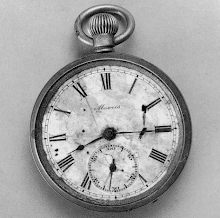skip to main |
skip to sidebar
A recent [Agency for Toxic Substances and Disease Registry] report reached few strong conclusions about the health risks to residents and construction workers at 4825 Glenbrook Road NW, which was severely contaminated by chemical munitions left over from a World War I-era Army testing facility at American University. But when the federal team behind the report presented their limited findings at last Tuesday’s Restoration Advisory Board meeting, the audience included three of those workers who built the house at the Spring Valley property — workers whom the researchers had been unable to reach. Interviewed after the meeting, the three said they suffered fairly serious health problems while working at the site, and that they believe the worst contamination also affects the American University president’s house next door at 4835 Glenbrook. “There’s all kinds of stuff under it, stuff that could explode under you,” one worker said ...

Researchers were unable to get any specific information from the workers other than transcripts of past interviews with Ginny Durrin, a Spring Valley filmmaker who is working on a documentary about the testing and the decades-long cleanup project. In those transcripts, the workers express grave concerns about 4835 Glenbrook. They alleged that contaminated soil ... and suspicious items were covered over with a layer of concrete. Army Corps spokesperson Christopher Gardner said investigators did thoroughly check 4835 in 2007 and 2008.
Northwest Current
May 18, 2016
As the Army Corps of Engineers investigates properties in Spring Valley for possible remaining hazards, the community’s Restoration Advisory Board is asking that the Army develop a system for prioritizing the properties on its work list, with some residents pushing for priority to be given to owners hoping to sell their homes. Although the Army’s work in the neighborhood — investigating and addressing contamination from World War I-era chemical munitions testing — is largely complete, officials last year identified about 100 properties that they wanted to look into further ... The board unanimously asked the Army to report back in July with a description of how it will prioritize properties ... With the current testing methods, [project manager Dan Noble] said it could take the Army as long as three years to look at all 100 suspect properties and remove all potentially dangerous items. Board member Kathleen Connell said that sellers of suspicious properties “are taking a bath” if they sell now. “I want to know how [properties are] to be expedited,” she said ...
As part of the investigation, the Army is partnering with the Naval Research Laboratories to pilot some new technology that could make the process a great deal faster and also less expensive ... With the new system to be tested, it should be possible to create an electromagnetic pulse over a metal object and listen for the item’s “decay curve” ... The decay curves on objects found by the devices will be compared with the information in the library, and only the items that match a dangerous substance would have to be excavated ... If the experimental devices correctly identify the objects that are potentially dangerous on the five properties, the new system will be used on the rest of the 100 properties where it is thought there might be dangerous buried materials.
Northwest Current
May 18, 2016
Alex Zahl, USACE: The Metal Mapper has been used at other sites with open land for the last 10-15 years. The device is fairly large and needs a tractor to move it around a property, which is not practical for a landscaped Spring Valley property. However, in the last 5 years, the Navy, who are considered DoD experts in finding ordnance items, has developed a smaller version of the Metal Mapper. This instrument is called the Time-Domain Electromagnetic Multi-sensor Towed Array Detection System (TEMTADS). At roughly 2 feet by 2 feet, the TEMTADS is pushed on a cart, making it more maneuverable and able to fit in smaller areas ... The Man Portable Vector (MPV) is another handheld unit, about 15 inches in diameter. The MPV is still in its developmental phase and only one exists at this time. The Navy has a prototype of the MPV and a TEMTADS. USACE has partnered with the Navy to conduct a Pilot Project in Spring Valley.
Spring Valley RAB
Meeting Minutes
March 8, 2016 (pg. 9)
 Free Hit Counter
Free Hit Counter




